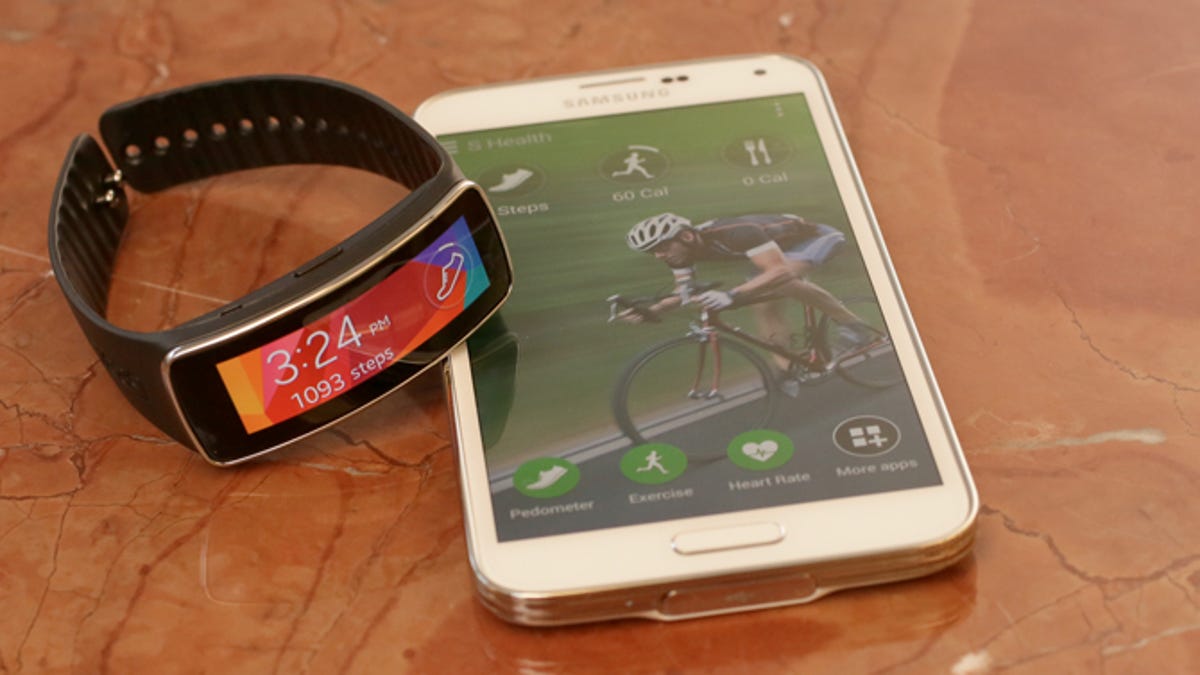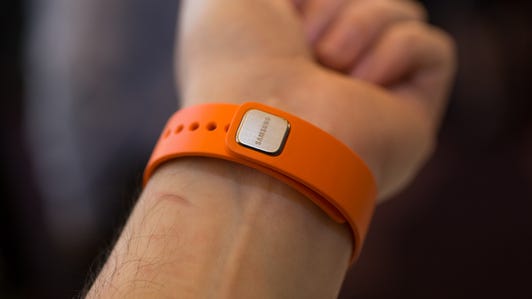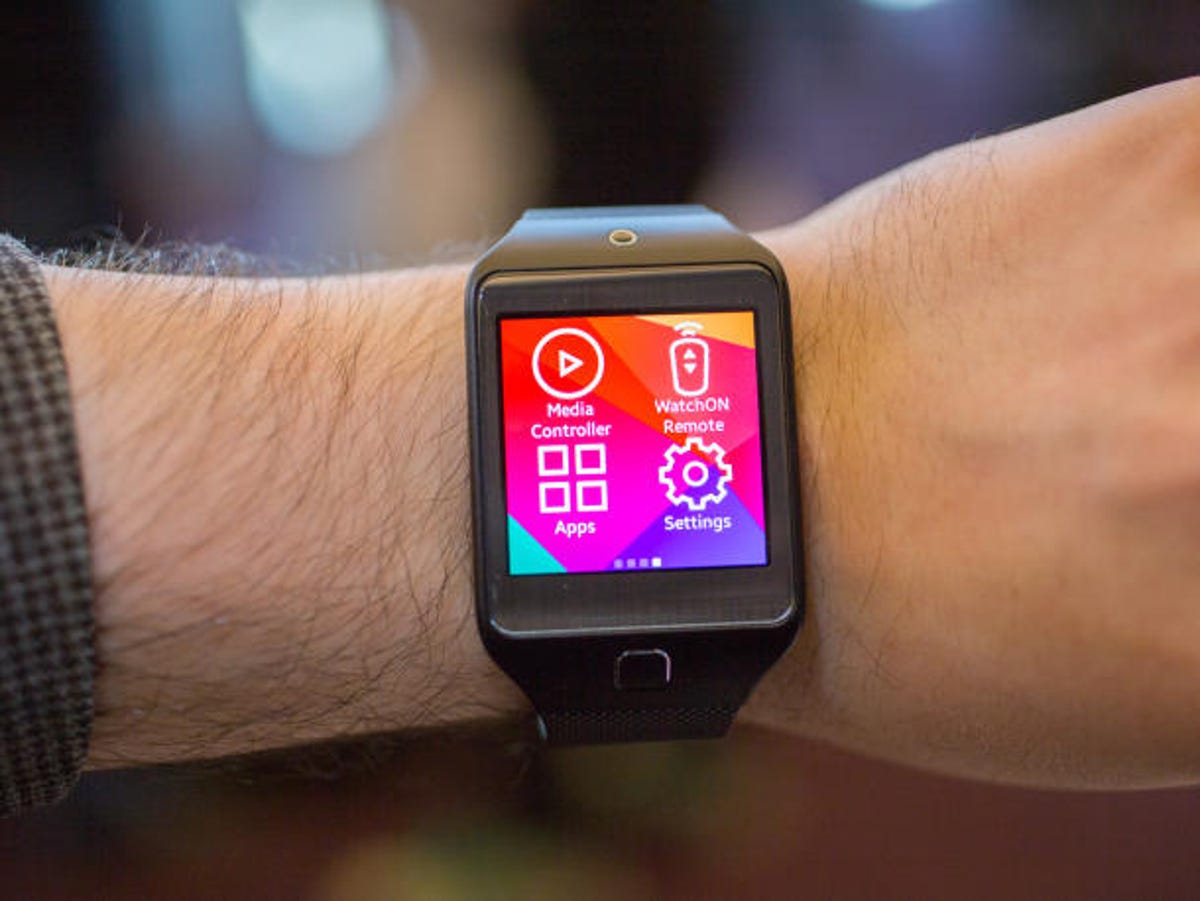
Sarah Tew/CNET
Samsung needs to let its Gear family of smartwatches off its tight Galaxy leash.
The Gear Fit, Gear 2, and Gear 2 Neo, which will hit the market Friday and range from $199 to $299, are the latest attempts by Samsung to breach the burgeoning smartwatch market. The $199 Gear Fit, in particular, is seen by the company as its best shot at the mainstream market. But to the Korean electronics conglomerate, mainstream is apparently limited to someone using a Galaxy phone or tablet.
That’s because Samsung has chosen to tie its Gear line exclusively to its own mobile products. Given that nearly one in three smartphones and one in five tablets sold is made by Samsung, it’s not an entirely bad bet to make. But the strategy also means it’s leaving a lot of potential consumers — many who would like a smart fitness tracker — out of luck.
See also
- CNET’s take on the Gear Fit
- Behind Samsung’s push to rule the world
- Google Wearables 2.0: How Android Wear breaks from Glass
If Samsung aspires to achieve true mass-market appeal, it needs to unshackle its Gear family from its Galaxy phones, allowing it to work with other popular devices like the HTC One M8 or the Nexus 5. Otherwise, it might find itself playing catch-up to a host of Android Wear-powered smartwatches on their way — many of which promise full Android compatibility.
The wearables business isn’t just a hobby for Samsung. It’s a vital new market that the Korean company is counting on to help attract new customers and offset slowing growth in the smartphone sector. It’s also Samsung’s way to establish itself as a leader and innovator early, rather than its usual reputation as a “fast follower.”
Samsung, for its part, says making its smartwatches sync with only its devices ensures the best experience possible. For example, the company had to modify the Bluetooth path so the Gear Fit can be connected to a phone at the same time the phone is connected to a car. It also tailored the software to work specifically with its devices and built the wearable to work with certain processing specifications.
Samsung Gear Fit, hands-on (pictures)






+10 more
Keeping Gear Fit Samsung-smartphone-only is also a potential way for the company to attract and keep people to its family of products — a strategy that has worked exceedingly well for Apple.
So far, smartwatches largely remain accessories to smartphones. The two devices have to be tethered together for the wearable to do basic tasks such as providing notifications or logging steps walked. Samsung’s devices are no different. When the company unveiled the Gear Fit in February at Mobile World Congress in Barcelona, it promised the device would be focused and easy to use. CNET reviewer Scott Stein applauded the product’s design but criticized its limitations.
Currently, about 20 different devices sync with its Gear family, including the $200 Galaxy S5 and $300 Galaxy Note 3. However, the iPhone, HTC One, and Nexus 5 — non-Samsung devices that are popular with consumers — don’t work with the fitness band.
Continuing down the closed route ultimately will limit adoption of the Gear Fit. It may keep more people in Samsung’s ecosystem, but it’s also shutting itself off from millions of potential customers. Last year, 31 percent of smartphones and 19 percent of tablets in the world came from Samsung, according to Gartner. No one knows the total sales for the first generation Samsung smartwatch, though the company said in November that it had sold 800,000 Galaxy Gears in the first two months of availability.
Samsung executives have told CNET they’d consider expanding Gear Fit compatibility to non-Samsung phones and tablets, but they haven’t been specific on the timing.
Its competitors, meanwhile, are slated to launch products using Google’s standardized Android Wear software, allowing them to work with multiple Android products regardless of manufacturer. Motorola with its Moto 360 is one example, and there’s also LG’s G Watch. Apple also is expected to upend the smartwatch market with its rumored iWatch, though no one expects the gadget to work with anything other than iOS devices. Samsung needs to work quickly to establish its presence now, and opening the Gear family up is the quickest way to achieve that goal.


CNET
Such a move runs counter to a big priority for Samsung: building an ecosystem of products that drives customer loyalty and fuels the purchase of more Samsung gadgets. That has been one of the keys to Apple and Google’s success. While Samsung’s brand is undoubtedly strong, it doesn’t have quite the same hold over users as the operating system makers do. It may find that limiting its Gear products to just its smartphone and tablets could ultimately hurt its ecosystem-building efforts rather than help.
In one instance, even the notoriously closed-off Apple found that it made more sense to make its devices work with non-Apple operating systems. When the Cupertino, Calif., company first launched its iPod, the music player only worked with Macs. However, adoption took off once Apple made the device and iTunes compatible with Windows PCs. Familiarity with iPods is one factor that has helped Apple gain so many iPhone and iPad users.
Samsung’s devices also may struggle to compete against all the upcoming Android Wear devices — not to mention the Pebbles and Martians of the world — that work with many more smartphones and tablets. People may be loyal to Android, but that doesn’t necessarily mean they’re loyal to one particular vendor. The beauty of Android is having lots of options; if you don’t like an HTC phone one year, you can buy one from Motorola or LG.
Instead of completely opening up its Gear family to other devices, one option would be making the wearables work with rivals’ devices but keeping certain features specific to Samsung phone and tablet users. That would allow people using competing phones to buy the Gear but also give consumers a reason to opt for Samsung smartphones instead.
One particular skill of Samsung is shifting course quickly when it finds what it’s doing doesn’t work. The company undoubtedly is testing its Gear smartwatches with other devices to see what the experience is like. It also will be listening closely to customer feedback about the wearable.
Let’s hope it doesn’t take too long before it opens up with its Gear family.
Updated at 9:40 a.m. PT with details about device pricing.
Samsung Gear 2 shows off its new Tizen interface (photos)






+22 more



